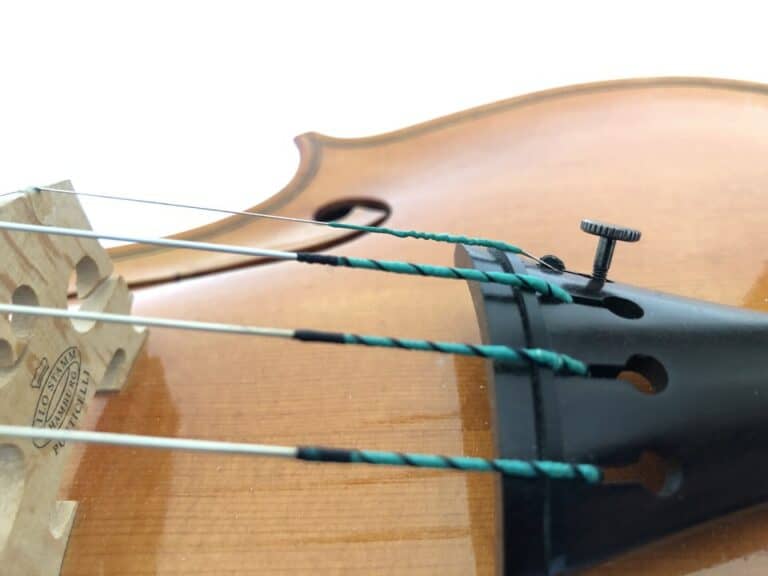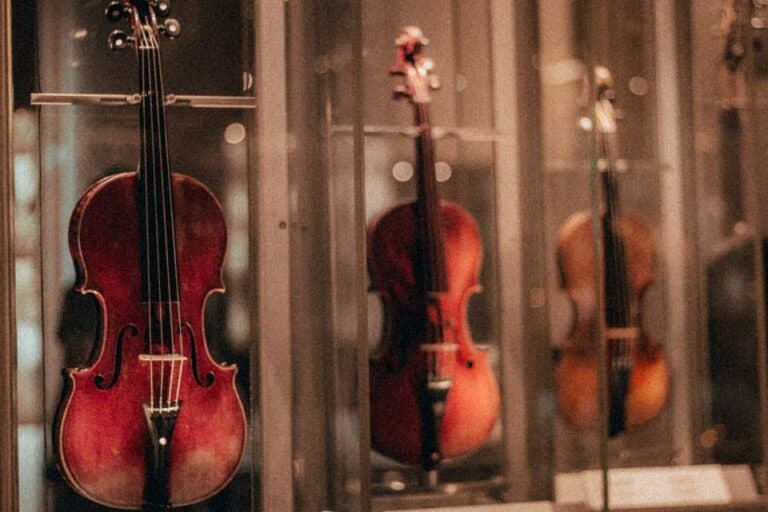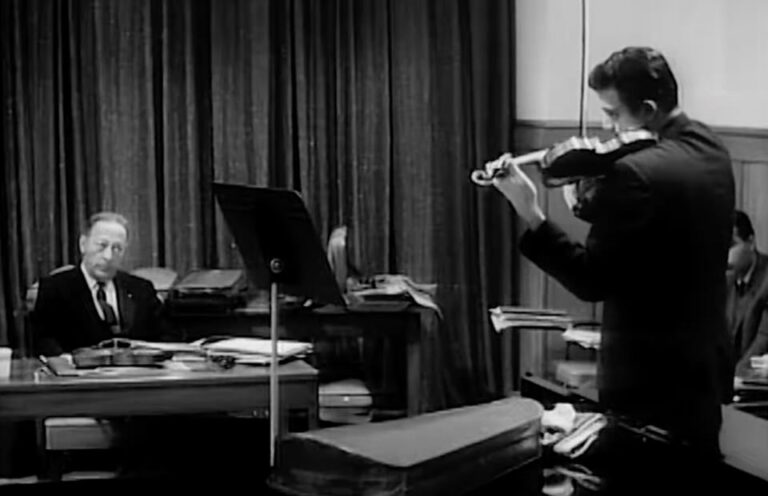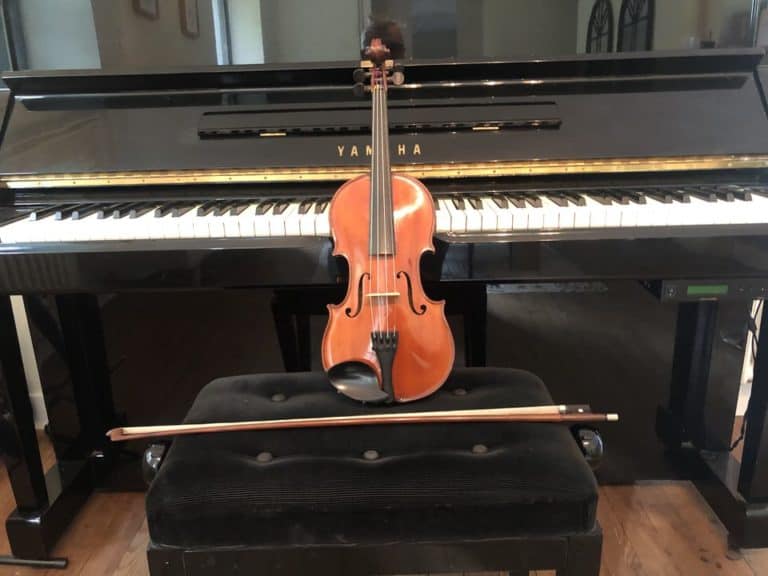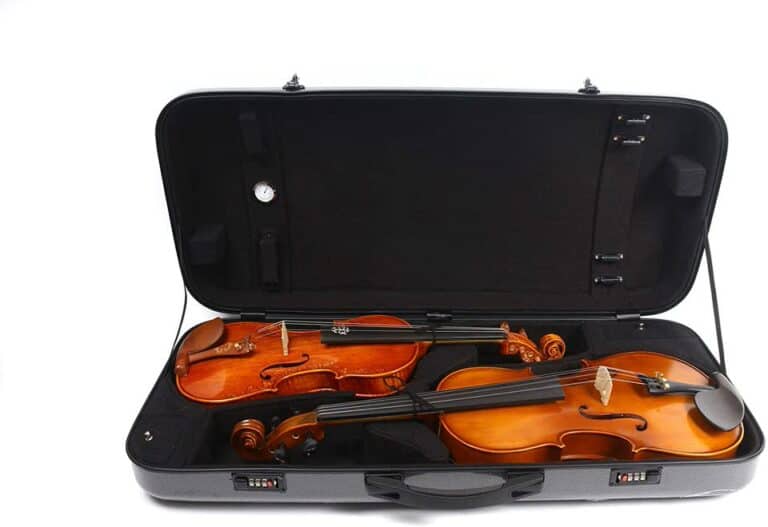How to Choose the Right Violin Size? With a Chart
The violin is one of the few instruments that exist in many sizes. It is important because so many details are taken into account when you play the violin. The length of the fingerboard has to match the size of the hand to play in tune. The thickness of the body has to fit perfectly between the collar bone and the chin.
For all the above reasons, it is important to choose the right size of the violin, for children but also adults with no average size.
Here, I present you a table with the most common violin sizes, their dimensions, and the violinists they are designed and built for.
| Violin size | Length | Fingerboard | Thickness | Violinist |
|---|---|---|---|---|
| 1/4 | 18,9 | 8 | 1,22 | For children age 3 to 6, with an arm from 17 to 20 inches |
| 1/2 | 20,5 | 9,05 | 1,26 | For children age 6 to 9, with an arm from 20 to 22 inches |
| 3/4 | 22 | 9,84 | 1,38 | For children age 8 to 11, with an arm from 22 to 23,5 inches |
| 4/4 | 23,6 | 10,82 | 15,75 | For children from 9. This is the size for adults |
This table is important to plan to buy a violin but nothing replaces actually trying one with the help of a teacher and or a violin seller – maker. Indeed, there are other considerations than just measurements, and many things have to be taken into account. Selecting the wrong violin size can be really detrimental for violin technique to a point where it can deter the musician. This is how.
Length of the neck and fingerboard
Fingers too far apart or too close up the position
The size of the violin itself is not the only thing to consider. If the violin is not of the right size, the left hand will be too far away from the shoulder, the angle of the elbow will be too opened. And, more importantly, the angle that the left fingers will make when they rest on the fingerboard will be wrong, the fingers will be too flat. This can have dramatic consequences. The violinist will develop bad habits that will hinder intonation, vibrato, and even shifting positions.
With a neck that is too long, the fingers will be too far apart; but this can be easily corrected and is not too detrimental to the overall technique.
On the contrary, a violin too short for some student who has grown up can cause a to close angle of the elbow. Again, the fingers of the left hand are not flat enough, and it is bad to obtain a full vibrato swing, to play double stops in tune. The tip of the finger will be too oriented towards the nail, and not the “meaty” part and the resulting sound will be too thin.
Lastly, there will be far less room, especially at the higher positions, for the fingers to perform correct half step notes and chromaticism. Playing in tune will be tricky. And usually, a violin too small will mean bigger hands and fatter fingers as well. So this is something to keep in mind.
The angle of the left wrist with the neck which translates into the angle of the fingers on the fingerboard is far more important. It is one of the first things to check when trying out a violin for size.
The angle of the elbow can give an indication of it.
Length of the violin
So we’ve seen that a violin too long will cause problems for the left-hand. But the length of the violin itself has other consequences. If the violin is too long, the left arm will be too extended which will invariably cause discomfort. And remember that when a guitarist starts he or she feels pain in the left fingers. But when a beginner picks up the violin for the first time, it is the left arm which is painful until the muscles become strong enough. That is why, holding the violin too far for a kid is unnecessary harmful, might hinder progress, and discourage the young person.
Let’s not forget that if the violin is too long, the right arm will suffer as well from bad technique. The point of contact will be too far from the chest. This causes not only discomfort but also hinders the proper transfer of the weight of the arm to the string. It will feel unnatural and the violinist will tend to press upon the string rather than freeing up the arm to rest naturally upon the string from its own weight.
Lastly, with a too big violin, the young student won’t be able to perform correct bow strokes. Remember that the bow has to be perpendicular to the string and parallel to the bridge at all times. The young student will find it difficult or even impossible to play like that especially at the tip of the bow. Bow strokes won’t be straight anymore. The young violinist will develop the bad habit of performing a circular motion at the tip of the bow just to reach it.
Some teachers put a sticker on the bow of their students to show a limit after which they should not go because they won’t be able to bow straight anymore.
On the contrary, a too-short violin in that instance is not that detrimental. The violinist will be able to bow straight but will risk exerting a force to heavy with the right arm being too close.
Thickness of the violin’s body
Now, we shouldn’t forget the thickness of the violin, depending on its size.
This is something that shouldn’t be overlooked, even though shoulder rests are designed to mitigate that aspect.
The thickness of violins has been decided and crafted with sound in mind but also with the size of the neck of people from the 17th century in mind. So it was easier for shorter people back then to hold the violin between the collar bone and the chin.
So it is important to choose a shoulder rest that can be adjusted to the difference in height when a child grows up; or to the difference of violin thicknesses for an adult player.
Even if a shoulder rest is used, the violin should always be on the collar bone.
The shoulder has to remain flat and un-used for that purpose at all costs.
There mustn’t be a squeezing motion of any sort of the shoulder to compensate for the difference in thickness of violins.
If a student develops a bad habit of squeezing the violin, tension will build up in the left arm. Fatigue will happen rapidly, but as a consequence, left-fingers will be more tense and more heavy on the fingerboard as well. Vibrato will suffer as much as shifting.
So the thickness of a violin with its corresponding shoulder rest is crucial for the overall technique because the consequences are really numerous.
People of no average size can choose a violin
Some women prefer to play on a slightly smaller violin. For all the above reasons, having a violin perfectly adapted to one’s size is really an advantage.
With the augmentation of the average size of violinists, some luthiers make violins that are bigger than what we consider standard, without entering viola territory. These violins have a couple of advantages concerning playability; their thickness offers a more adequate dimension to long necks. Big hands find their way easier in these longer fingerboards. The sound can be a bit thicker, deeper, but less brilliant sometimes. The inconvenience is if you want to trade it in for another violin: bigger than standard violins will be more difficult to sell.
So it is up to you.
People from the 17th century were smaller than we are today. When luthiers such as Amati and Stradivari designed the violin still used today, the average size for people wasn’t as tall as today. Even when we look at virtuoso from the beginning of the 20th century, Heifetz, Menuhin, Milstein for example, they weren’t on the tall side. So the side of their violin was more adequate to the size of their arm. The length of their neck did correspond more with the thickness of the violin: they all played without a shoulder rest. When someone tall tries to play without a shoulder rest, putting the violin on the collarbone, the head has to lean down to the chinrest in an unnatural manner. There is an extra strain to the muscle of the neck, especially when down shifting to lower positions.
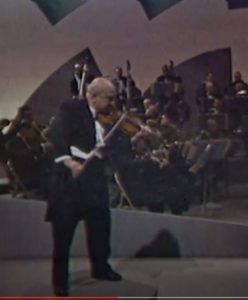
Misha Elman wasn’t a tall man, and he struggled to bow straight at the tip. His arm just wasn’t long enough. And the bridge was a tiny bit too far. The difference between him and Szigeti below is stunning. He was an amazing violinist nonetheless, and the proof that anybody can overcome any physical disadvantages to acquire perfect violin technique.
Szigeti who was a very tall man looks strange when he plays the violin because his arms look unnaturally too close to his body. People kindly and a bit mockingly said that he looked like he played “in a phone booth”! He didn’t try to buy a bigger violin than standard as a play with a great Stradivarius.

This is why we usually recommend renting a violin for children when they grow up fast: it will be cheaper and easier than to buy and sell violins regularly.


